|
Rune's Dragonfly
By Rune Andre Stokkebekk
This is one of my favorite
patterns for early season fishing in the lakes where i live. The
fly sinks well, though it is not very heavy. A nice combination
when you are fishing with light rods. It might be “dangerous” to
call it by my name. Maybe some of you have already tied, and
used it for years. Anyway it is a neat way to make an extended
body without a lot of work.
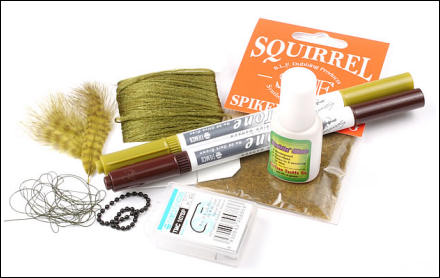
Materials:
Hook: TMC 107SP, # 8
orTMC 921, # 8.
Thread: Olive or Brown, same as abdomen.
Extended body: Olive or brown antron yarn.
Legs: Xsmall or fine, round rubberlegs.
Eyes: Black bead chain eyes, small.
Wingcase: Olive or brown grizzly marabou.
Thorax: Brown or olive Squirrel SLF Dubbing.
Tying instructions
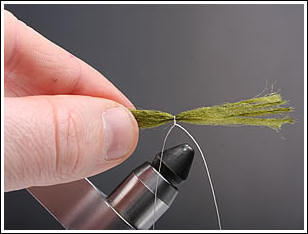
1: Cut 5cm long pieces
of antron yarn, moisten them. Use a thick sewing thread and make
knots around the yarn. Make 4 or 5 knots. This will make a nice
little "tip" on the end of the body, just like the real ones
have.
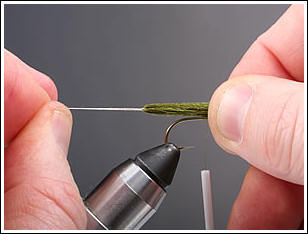
2: Fasten hook and wrap
two layers of thread on the first 1/3 of the hook shank. Pull
the sewing thread when you tie in the extended body. By doing
this you will get the typically "cigar" shape of the dragonflys
body.
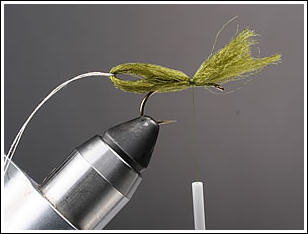
3: Now it looks like
this. A loop from the side. Make sure that the body is well
centered on the hook.

4: Tie in the eyes on
the underside of the hook and secure thread wraps with some
super glue.
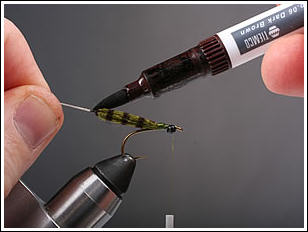
5: If you like some
fancy stripes on the body, now it is time for that!
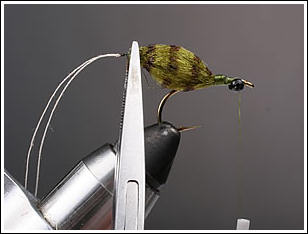
6: Time to shape the
body: Add superglue on the tip of the body aprox. first 3mm.
Before the glue dries use a forceps etc. and squizze and push a
little. If you blow gently the glue will cure faster..
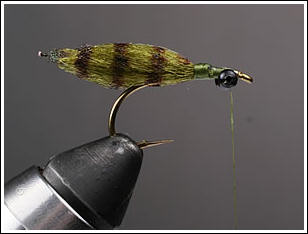
7: The body is ready!
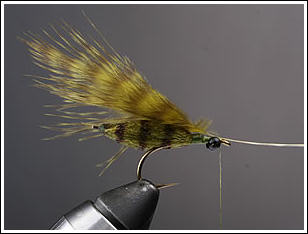
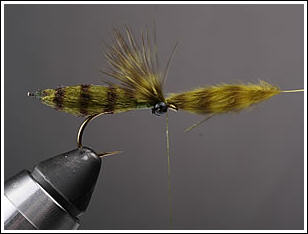
8: Fasten a grizzly
marabou feather and pull forward.

9: Take 3 pcs of 6cm
long rubberlegs and tie in on the top of hook. Let them slide on
the thread to the correct placement.

10: Tie down all legs
forward.. This will make it easier for you to tie them in the
correct place later.
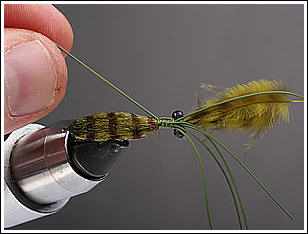
11: Pick the legs that
are closest to the place you want to tie them in. 2 or 3 wraps
of thread. One on eace side.
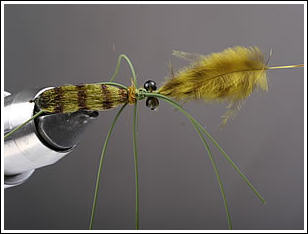
12: After the first pair
of legs i dub a little in front of them. And repeat with the
second pair.

13: Dub in front of the
second pair of legs. Tie in the third and dub infront of them
too.
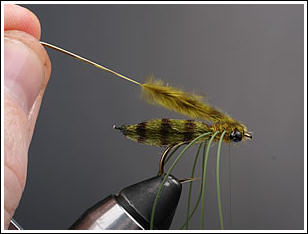
14: Fasten the wingcase.
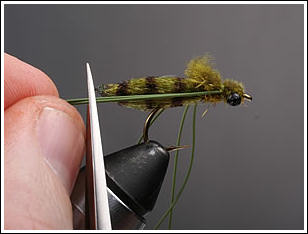
15: Cut of the wingcase
to desired length. And cut the legs, i cut all on one side
together at the point where the body ends.
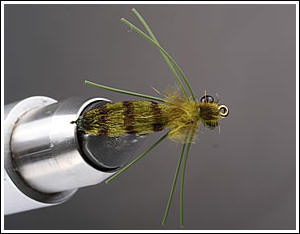
16. Done!
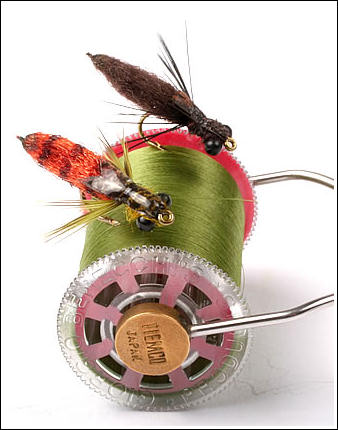
Thin skin or turkey feathers
also makes nice wingcases. I also use soft hackle as legs.
By Rune Andre
Stokkebekk 2009 ©
|